Thank you to the Whyte Museum of the Canadian Rockies for granting permission to the Park Warden Service Alumni to post this interview on our website
Park Warden Alumni Society of Alberta
Oral History Project Phase 7.
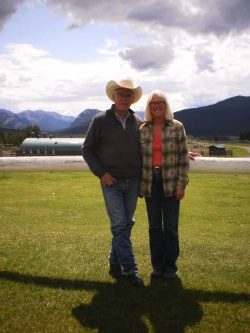
Interview with Ya Ha Tinda Ranch Manager, Rick Smith and his wife Jean,
on Wednesday, July 6th, 2016 at their home at the Ya Ha Tinda Ranch.
Interview conducted by Rod Wallace.
Rod: Can we get a little bit about your background? Where were you raised and a little bit about how you got started with parks and that kind of thing.
Rick – I was born in Beinfait, Saskatchewan down on the border with Montana. We moved up to Saskatoon before I started school and lived on a place northwest of Saskatoon. When I was a young guy (16 yrs old) I went to Banff and worked for Bud Brewster and I worked for about 25 years with Warner & MacKenze and then with Ron Warner. It became Warner Guiding when I finally left. That’s quite a number of years ago now. From there I went to a cattle ranch southwest of Cochrane and I was there for 4 years. It was at John Nylund’s retirement party that I heard about the opportunity to apply for an interview for this job.
Rick and Jean Smith
Jean – I was born in Grand Prairie, Alberta. My Dad had a heart condition so we moved to the Okanogan, just outside of Vernon and that is where I grew up…my teenage years; and then following that I did a little stint at University got a music degree. Then, I lived in Banff and I worked for Brewster Transport, Parks Canada, and the Town of Banff. When we were at the , Diamond 7 (the Ron Mannix ranch at Jumping Pound) I commuted back and forth to the Town of Canmore and then we came here.
Rod: So you have a long history of working for Parks and in Banff.
Jean: Yes, I worked in Banff for about 20 years.
Rod: What about your childhood? In relation to horses, did you have an interest in horses as a youngster?
Rick: Yeah. Pretty much. My foster family that I was living with at the time were right into horses and cattle. They got me started. I went through the 4-H thing and Alec Pashovitz (my foster father) was a horse racer and bought and sold horses for a living and all those good things. When I came out here I was looking for work with horses. I had an interview with the Rafter 6 but that didn’t turn out and I ended up in Banff. I was lucky enough to meet Bud (Brewster at the barns He told me to come to work the next morning so I slept in the picnic shelter there and started at six the next morning. I stayed with Brewsters for a long time and I learned everything about the backcountry….how to shoe horses, pack horses and all that kind of stuff. At home we’d used horses for moving cows and for racing of course, but the biggest influence was Banff and the outfitters.
Rod: Were there were a lot of mobile camps in those days?
Rick: Yeah, that’s what we did mostly. Moving trips where the camp moved every day. The only big trips with base camps were the Trail Riders of the Canadian Rockies and the Skyline Hikers where we packed for all the hikers at that time. The big base camps that Ron (Warner) had came about quite a few years later in the outfitting operation – the fishing trips and photography trips and that kind of thing. It was nice.
Rod: So you must have seen a lot of horses and a lot of people in those years. People from all over the world I bet….some interesting characters…….you were interacting with them?
Rick: Yeah. Well, in those days I was the junior man so I was the ‘swamper’ and the camp packer most of the time. The guys like Lucky Scott, Bill Bagley and Dan Heather were the people that the most of guests followed around and talked to. Most of the guests weren’t interested in this kid that didn’t shave yet (laughs). Yeah, we did meet some fantastic people. It was kind of a rich man’s sport in those days. Mostly the people – the clientele that stayed at the Banff Springs … a little higher up the ladder.
Rod: The elite.
Rick: Well, that’s what they thought they were anyways. (laughs) They were super nice people. It was a lot of fun and I learned a lot about people from the guys like Dan Heather and Bud Brewster and all those who had been working with people of every class. All their lives I watched how they treated people and it was pretty obvious that you got a lot more done by working with people than working against them. It has done me a good stead since then.
Rod: It’s true. It is pretty important in that type of business to relate to your client and to learn from them as well. When did you two meet?
Jean: There are some stories you can’t tell. (laughs) We met in Banff and we had both been there many, many years. We knew lots of the same people and knew them well but we had never met. Rick spent most of his time out in the bush and I was in town until one point I got a part time job in the Mount Royal (Hotel) lounge and he came in after trips and so that is how we met. We have been together ever since. It’s been 26 years.
Rod: That is a major accomplishment these days.
Jean: The horses were brand new to me when I met Rick and obviously in the last 25 years I have spent a lot of time with horses, but he (Rick) was the best teacher I could have ever had.
Rod: Did you do any of the trips?
Jean: I didn’t do any of the expedition trips or the moving trips but we did a few trips into camps. Annually, Rick would take a bunch of Banff locals on a trip and I went on a couple of those trips.
Rod: So Jean, you got to meet a number of people especially a few members of the Warden Service when you started to work for parks.
Jean: Yeah, and at that time I was the revenue collector so I went around to all the revenue points and collected all the money from the David Thompson Gate to the East Gate, the (swimming) pools, campgrounds and Information Centres. So it was not so much with the Warden Service, however, I did live at Two Jack Campground, during those summers and so of course, I got to know a lot of the wardens.
Rod: So Rick, would you have had some dealings with the wardens when you were working for Brewsters?
Rick: Oh yeah, a lot of them, when I started with Brewsters, were some of my best friends….Scott Ward and a few of those guys….Randy Chisholm, and they were all kind of just getting started going to Lethbridge (College) going to Forestry schools to get into the Warden Service. I chose to stay with the outfitting but they’d been my friends all my life and still are today. I met a lot of different wardens in the backcountry because you’d have a district warden in those days who you met on whatever pack trips you were running. On moving trips we went through everybody’s district at some point so we kind of met them all. It was always good advice and a good rapport. Young single guys (wardens) liked to show up at our camp at about supper time a lot of the time…it was amazing how that worked. And the young pretty girls we always seemed to ride by their cabins when they were there…and that was kind of funny how that worked too. (laughs)
Rod: A person kind of learns these things eh. I know when I was a park warden, I would get the odd hamburger at supper time from the people camped in the campground…good memories.
Rod: So, you heard about the opening at the ranch here, and applied and got the position. You have been challenged by all the different things you’ve had to do over those years. I know, you have seen a lot of changes in your time there but it must have been pretty exciting to get an opportunity to live and work at the ranch will all your experience and whatnot. Were there any concerns about moving out to this location?
Rick: Jean and I knew the ranch a little bit. Jean had been through the ranch on hiking trips and we’d camped at the Bighorn Campground quite a few times in the past. I had come out of the park a lot with pack trips and we’d start a trip here or end a trip here so I knew Slim Haugen and Cal Hayes and all those guys. And most of the guys that worked at the ranch in those days …. Steve Bennett and Ken Pigeon… were friends of mine that I’d worked with in outfitting. (Steve Bennett and Ken Pigeon had also worked for Ron Warner in the guiding & outfitting business). So the move up here wasn’t that big of a challenge. The first thing when I got the job I think I woke up on the floor kind of surprised that that had happened. We had to sit down and pinch ourselves and say “We really are going there to live!” That was a big change. But when we got here we were lucky. The first year or two it took just learning the routines, the different seasons, what was expected of you, how the whole place operated from generators to the water system to everything else. In those days it was a pretty isolated place. We had one satellite phone that was expensive and awkward to use most of the time.
Jean: And we had no answering machine or fax…nothing. Now, of course, we’ve had an onslaught of technology. We have the internet, we have VOIP and WiFi…I can sit on the deck and text on my iphone…I have a smart tv where I can download Netflix movies….like… this is the Ya Ha Tinda! When we got here there was a telephone with no answering service. So it was quite a bit quieter as far as communication with the outside world….for sure.
Rod: And what year did you arrive here?
Rick: We were here on August 25th, 2003. That was our starting date at the ranch.
Rod: Isn’t that amazing…the changes you’ve seen in that 13 year period.
Jean: It is unbelievable…the changes were very rapid.
Rod: It is still a pretty special place. You look out there and marvel at it. This whole area is so special and it is always a treat to come up here.
Rod: So you noticed a number of things…you had to get used to the routine and whatnot….you saw some changes to make and made some changes.
Rick: Well, we didn’t make changes right away and some of it was kind of put upon us. When I first got here the ranch taught only one horse course a year and it was called an Advanced Horsemanship course. It was five days and there might be five or six people. With changing from the old service to the more modern service we got a lot more staff with no background in horses at all. The original park wardens had some background in horses so we had to step up our training and our teaching a whole bunch from days gone by. And so we started courses, professional development courses, where in March and April….
Jean: Every week through those two months….they call them “CPD courses” now which is Continuing Professional Development for the participants who come back each year to refresh and upgrade and improve their skills. So rather than having ….because the Advanced School had grown to as many as 14 participants and there was not a lot of one-on-one instruction there. They’d spend a lot of time sitting around on their horses waiting…so these shorter courses are more intense and more hands-on…..and one-on-one.
Rod: That is a pretty major change in your time commitments.
Rick: And then there are other things besides the horses. The people (Parks Canada staff) are so green that are starting with Parks Canada now that we had to change our whole (horse) training program. Instead of riding colts for six months and turning them over to the older Parks Canada staff who would take them over, now we have to bring the horses into the parks ready to go pretty much for anybody. So our training of the horses has changed. And now we have an arrangement with Olds College where they (farrier students) come out once a year. It is great for the students as we have 60 or 70 head of good broke quiet horses that they can trim and it helps us to get the horses ready for the spring. We do all of our worming and inoculations that day, and trim all the horses’ feet. Also branding if it is necessary. We work with all sorts of different groups out here. It has been on-going and it changes every year.
Rod: With the cut-backs that happened to the Warden Service how did it effect you and the running of the ranch?
Rick: We didn’t notice much of a change at all out here. We still had the same job to do, the same colts to train, the same amount (or maybe more) people to teach horsemanship to, the same amount of feeding and care of the stock, the same amount of maintenance and same amount of fencing, etc.
Rod: How many horses were here when you arrived.
Rick: Well, there was probably about 100 head of patrol horses that came back from the parks because there were quite a few more people (backcountry wardens) out (on patrol) in those days. Usually the boys (ranch hands) rode six to seven head of colts at that time so you would have 10 head of horses ready to go every spring. So we’d have about 114 head of horses which was down quite a bit from previous years you know. But it has gone down again since then. We are hoping that things have seemed to have settled in and that the numbers will start climbing again. More people are using the horses and….
Jean: Banff is actually short of horses…they need more. We have given them three or four colts this year that the boys (horse trainers) have just finished (training) and Banff could still use a couple more. With the E.I. monitoring and the Bison Project and everything else, they are using the horses much more. And Trail Crew is really starting to step up the horse use again too, which is great.
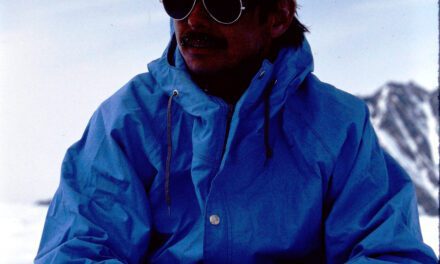
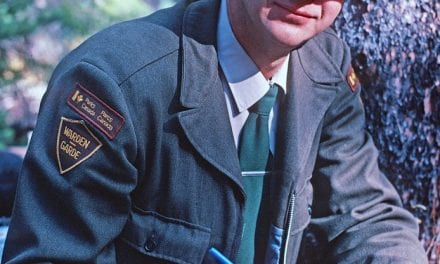
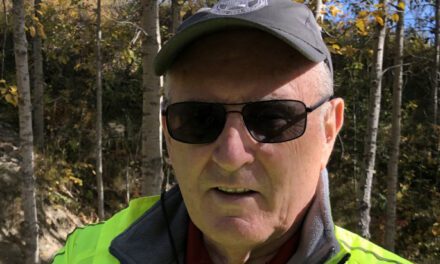
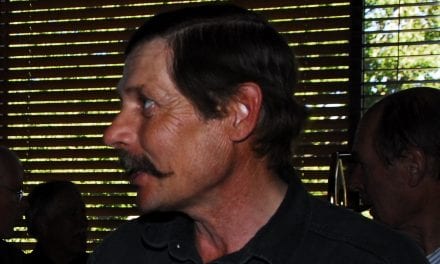
Rick Smith please contact me, scot hall